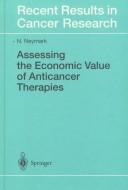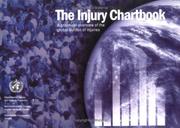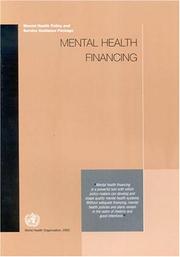| Listing 1 - 9 of 9 |
Sort by
|
Book
ISBN: 9242562653 Year: 2004 Publisher: Genève Organisation mondiale de la santé
Abstract | Keywords | Export | Availability | Bookmark
 Loading...
Loading...Choose an application
- Reference Manager
- EndNote
- RefWorks (Direct export to RefWorks)
Cost of medical care --- Coût des soins médicaux --- Emotional health --- Geestelijke gezondheid --- Geneeskundige zorgen--Kosten --- Health care costs --- Kosten van de geneeskundige zorgen --- Medical care [Cost of ] --- Medical care--Cost --- Medical service [Cost of ] --- Medicine--Cost of medical care --- Medische zorgen--Kosten --- Mental health --- Mental hygiene --- Santé mentale --- Soins médicaux--Coût --- Gezondheidsindicatoren --- Gezondheidsbeleid --- Indicateurs de santé --- Politique de la santé --- World health --- Orientation
Book
ISBN: 9242562076 9789242562071 Year: 2002 Publisher: Genève Organisation mondiale de la santé
Abstract | Keywords | Export | Availability | Bookmark
 Loading...
Loading...Choose an application
- Reference Manager
- EndNote
- RefWorks (Direct export to RefWorks)
Coût des soins médicaux --- Geestelijke gezondheid --- Geneeskundige zorgen--Kosten --- Kosten van de geneeskundige zorgen --- Medical care [Cost of ] --- Medical care--Cost --- Medical service [Cost of ] --- Medicine--Cost of medical care --- Medische zorgen--Kosten --- Soins médicaux--Coût --- Gezondheidsindicatoren --- Indicateurs de santé --- 614 --- Gezondheidsbeleid --- Openbare gezondheidszorg--(zie ook {351.84}) --- Politique de la santé --- World health --- Orientation

ISSN: 00800015 ISBN: 3540640304 3642721257 3642721230 9783540640301 Year: 1998 Volume: 148 Publisher: Berlin ; Heidelberg ; New York Springer Verlag
Abstract | Keywords | Export | Availability | Bookmark
 Loading...
Loading...Choose an application
- Reference Manager
- EndNote
- RefWorks (Direct export to RefWorks)
BOOK REVIEW Kevin B. Knopf, JNCI, 1999, 91(14), 1248-1249The need for accurate economic analysis to guide health care delivery is irrefutable, since health care costs continue to rise in parallel with a growing demand in value for our spending. Cancer care accounts for 5%-10% of all health care dollars spent in the United States, and although breakthroughs in cancer research will provide much needed improvements in the treatment of cancer, they will also come at a cost. Dr. Neymark speaks in his preface of the "aura of sanctity" surrounding cancer so that "everything possible" is done for the patients. This aura derives partly from the seriousness of the disease and the fear surrounding a diagnosis of cancer. However, a need for high-quality economic research in cancer care is still necessary to guide rational resource allocation, and this text succeeds in succinctly and thoughtfully summarizing the state of the art of economic analysis of cancer therapies. By exploring the literature related to economic evaluation of cancer therapies over a 10-year period, Dr. Neymark has provided a great deal of food for thought for research in this area. The general nature of economic evaluation is defined in the introduction: "Economic evaluation is a widely applicable economic method concerned with the comparison of two or more alternatives with respect to both their positive and negative impacts or benefits and costs, respectively, as these impacts are generally termed. It is the presence of alternative methods of treatments that create an economic problem." It is the presence of choices that makes economic evaluation a valuable tool. In the past, the treatment of cancer, particularly metastatic disease, was limited in the number of options available, as the author notes. However, new treatments are continually being developed, which come with a cost versus benefit trade-off, and thus economic evaluations will assume a greater importance as our therapeutic choices increase. The very brief chapter on the epidemiology of cancer could have been made more substantial, and the addition of graphs to interpret trends would have been useful. The following chapter provides an excellent overview of the nature of cancer and its major treatment modalities, which will be of interest to the nonclinician. The chapters on economic evaluation and the economic burden of cancer are well written and serve as solid introductions for the novice to these areas and a good review for others. He describes the rationale and methods behind the cost-of-illness studies, which he treats with a healthy skepticism. A lengthy section on economic evaluation covers important concepts and describes, in turn, the four major types of studies: cost-minimization, cost-benefit, cost-effectiveness, and cost-utility, the latter two being the most appropriate type of study for most cancer therapeutics. Discussion about methodology involved in collecting data for cost and outcomes, perspective of the analysis, valuation, and presentation and interpretation of results of economic evaluations are also well written. The heart of the text is a thorough discussion of the major economic studies of cancer treatment published from 1985 to 1996. The author reviews the relevant literature pertaining to costs and treatment of most of the major malignancies, including relevant supportive care areas. Topics covered include the following: breast cancer (14 studies), lung cancers (eight studies), colorectal cancer (eight studies), prostate cancer (10 studies), genitourinary and gynecologic malignancies (11 studies), leukemias and lymphomas (10 studies), therapies for emesis and infections (nine studies), hematologic support and transplantation (18 studies), and palliative care (five studies). Every section is preceded by an overview of treatment options that are fairly accuratealthough not without occasional omissions and errors; these sections will be invaluable for the nonclinician. Each study is described concisely, including rationale, type of analysis, perspective, techniques, data sources, and results, when stated by the original authors. Dr. Neymark justly criticizes studies with conceptual or methodologic flaws, erroneous assumptions, or clear oversights in the evaluation, and as a critical reviewer, he certainly holds no punches. This lengthy and in-depth review of a body of work makes his text a compelling read and enables the reader to gain a great deal of insight into how to, and often how not to, evaluate the economics of cancer therapeutics. Through reading his summation of the body of literature, one obtains an appreciation of not only what studies have been performed and which studies should be performed but also a sense of the "state of the art of the methodology" currently in use. Each chapter closes with a concise table of the articles reviewed and concluding comments that highlight the strengths and weaknesses in the studies, comparing studies when appropriate, and pointing out possible future directions. A concluding chapter discusses some of the broader controversies, which have been hinted at throughout the review, in an insightful manner. The use of "league tables" to compare cost-effectiveness ratios is justly criticized, due to the implicit assumption of comparability of studies. The issue of costs versus charges is briefly discussed, and a lengthy discussion of the merits of collecting economic data in clinical trials points to the complementary benefit of modeling. The nature of outcomes used, e.g., the inapplicability of life-years saved as an outcome to evaluate antiemetic therapies, is also explored. By design, this review cannot serve as a complete "how to" guide for economic evaluations, although there are many pearls to be gained from a thorough reading. The economics of cancer prevention and screening, which are in many ways more difficult to study from an economic perspective, were not explored in this text, but there are other sources for this information. Many of the reviewed studies are excellent and may serve as an aide to treatment choices for a specific situation. In a broader sense, this book will be extremely valuable for both the health service researcher who wishes to learn about cancer economics and the cancer researcher interested in the economic aspects of their field. By reviewing 9 years of the literature in a systematic, thoughtful, and critical manner, there is much to be gained for the interested reader who invests a small amount of time reading this excellent work.
Cost of medical care --- Coût des soins médicaux --- Geneeskundige zorgen--Kosten --- Health care costs --- Kosten van de geneeskundige zorgen --- Medical care [Cost of ] --- Medical care--Cost --- Medical service [Cost of ] --- Medicine--Cost of medical care --- Medische zorgen--Kosten --- Soins médicaux--Coût --- Cancer --- Medical care, Cost of --- Neoplasms --- Cost-Benefit Analysis --- Health Care Costs --- Treatment --- Economic aspects --- Cost effectiveness --- therapy --- methods --- economics --- Oncology . --- Oncology. --- Tumors --- QZ 266 Neoplasms. Cysts -- Therapy --- Economic Evaluation --- Costs and Cost Analysis --- Antineoplastic Agents
Book
ISBN: 9241561947 Year: 1999 Publisher: Genève Organisation mondiale de la santé
Abstract | Keywords | Export | Availability | Bookmark
 Loading...
Loading...Choose an application
- Reference Manager
- EndNote
- RefWorks (Direct export to RefWorks)
Armoede --- Cost of medical care --- Coût des soins médicaux --- Destitution --- Geneeskundige zorgen--Kosten --- Health care costs --- Justice sociale --- Kosten van de geneeskundige zorgen --- Medical care [Cost of ] --- Medical care--Cost --- Medical service [Cost of ] --- Medicine--Cost of medical care --- Medische zorgen--Kosten --- Pauvreté --- Poverty --- Rechtvaardigheid [Sociale ] --- Social justice --- Sociale rechtvaardigheid --- Soins médicaux--Coût --- #SBIB:316.334.3M50 --- Organisatie van de gezondheidszorg: algemeen, beleid --- World health --- Orientation --- Health facilities --- Finance --- Public health --- Forecasting --- Health --- Social aspects --- Mortality --- Tobacco use --- Prevention
Book
ISBN: 9242562017 Year: 2001 Publisher: Genève Organisation mondiale de la santé
Abstract | Keywords | Export | Availability | Bookmark
 Loading...
Loading...Choose an application
- Reference Manager
- EndNote
- RefWorks (Direct export to RefWorks)
Cost of medical care --- Coût des soins médicaux --- Emotional health --- Geestelijke gezondheid --- Geneeskundige zorgen--Kosten --- Health care costs --- Kosten van de geneeskundige zorgen --- Medical care [Cost of ] --- Medical care--Cost --- Medical service [Cost of ] --- Medicine--Cost of medical care --- Medische zorgen--Kosten --- Mental health --- Mental hygiene --- Santé mentale --- Soins médicaux--Coût --- Gezondheidsindicatoren --- Gezondheidsbeleid --- 614 --- Geestelijke gezondheidszorg --- Indicateurs de santé --- Politique de la santé --- Openbare gezondheidszorg--(zie ook {351.84}) --- Soins de santé mentale --- World health --- Orientation
Book
ISBN: 9242561983 Year: 2000 Publisher: Genève Organisation mondiale de la santé
Abstract | Keywords | Export | Availability | Bookmark
 Loading...
Loading...Choose an application
- Reference Manager
- EndNote
- RefWorks (Direct export to RefWorks)
Armoede --- Cost of medical care --- Coût des soins médicaux --- Destitution --- Geneeskundige zorgen--Kosten --- Health care costs --- Justice sociale --- Kosten van de geneeskundige zorgen --- Medical care [Cost of ] --- Medical care--Cost --- Medical service [Cost of ] --- Medicine--Cost of medical care --- Medische zorgen--Kosten --- Pauvreté --- Poverty --- Rechtvaardigheid [Sociale ] --- Social justice --- Sociale rechtvaardigheid --- Soins médicaux--Coût --- Gezondheidsindicatoren --- Gezondheidsbeleid --- 614 --- Indicateurs de santé --- Politique de la santé --- Openbare gezondheidszorg--(zie ook {351.84}) --- WORLD HEALTH ORGANIZATION --- WORLD HEALTH --- french --- french. --- World Health Organization --- World health --- World health organization --- French. --- Orientation --- Health facilities --- Finance --- Public health --- Forecasting --- Health --- Social aspects --- Mortality --- Tobacco use --- Prevention
Book
ISBN: 9789241564151 Year: 2011 Publisher: Geneva World Health Organization
Abstract | Keywords | Export | Availability | Bookmark
 Loading...
Loading...Choose an application
- Reference Manager
- EndNote
- RefWorks (Direct export to RefWorks)
The Global status report on alcohol and health (2011) presents a comprehensive perspective on the global, regional and country consumption of alcohol, patterns of drinking, health consequences and policy responses in Member States. It represents a continuing effort by the World Health Organization (WHO) to support Member States in collecting information in order to assist them in their efforts to reduce the harmful use of alcohol, and its health and social consequences. The report was launched in Geneva on Friday 11 Februray 2011 during the first meeting of the WHO global counterparts for implementation of the global strategy to reduce the harmful use of alcohol.
Addiction to alcohol --- Alcohol abuse --- Alcohol intoxication --- Alcoholism --- Alcoholisme --- Alcoolisme --- Cost of medical care --- Coût des soins médicaux --- Dipsomania --- Drinking problem --- Drunkenness --- Geneeskundige zorgen--Kosten --- Health care costs --- Inebriety --- Intemperance --- Jellinek's disease --- Kosten van de geneeskundige zorgen --- Liquor problem --- Medical care [Cost of ] --- Medical care--Cost --- Medical service [Cost of ] --- Medicine--Cost of medical care --- Medische zorgen--Kosten --- Soins médicaux--Coût --- E-books --- Alcohol [Ethyl ] --- Adverse effects --- Alcohol --- Drinking of alcoholic beverages --- Alcohol consumption --- Alcohol drinking --- Alcohol use --- Alcoholic beverage consumption --- Consumption of alcoholic beverages --- Social drinking --- Alcoholic beverages --- Temperance --- Drinking alcohol --- Grain alcohol --- Potable alcohol --- Intoxicants --- Alcohols --- Intoxication --- Substance abuse --- Controlled drinking --- Health aspects --- Intoxication, Alcohol

ISBN: 924156220X 9786610060443 924068073X 1280060441 0585474826 Year: 2002 Publisher: Geneva : Department of Injuries and Violence Prevention, Noncommunicable Diseases and Mental Health Cluster, World Health Organization,
Abstract | Keywords | Export | Availability | Bookmark
 Loading...
Loading...Choose an application
- Reference Manager
- EndNote
- RefWorks (Direct export to RefWorks)
This publication seeks to provide a global overview of the nature and extent of injury mortality and morbidity in the form of user-friendly tables and charts. It is hoped that the graphical representation of the main patterns of the burden of disease due to injury will raise awareness of the importance of injuries as a public health issue and facilitate the implementation of effective prevention programmes.
Charts, diagrams, etc. --- Cost of medical care --- Coût des soins médicaux --- Forecasting --- Geneeskundige zorgen--Kosten --- Health care costs --- Kosten van de geneeskundige zorgen --- Medical care [Cost of ] --- Medical care--Cost --- Medical service [Cost of ] --- Medicine--Cost of medical care --- Medische zorgen--Kosten --- Prévision --- Soins médicaux--Coût --- Tabellen, grafische voorstellingen, enz. --- Tableaux, graphiques, etc. --- Voorspelling --- Accidents. --- Wounds and injuries. --- Business. --- Health. --- Medicine. --- Social Science. --- Wounds and injuries --- Accidents --- Death --- World health --- Public Health --- Social Sciences --- Vital Statistics --- Health --- Diseases --- Environment and Public Health --- Medicine --- Population Characteristics --- Anthropology, Education, Sociology and Social Phenomena --- Data Collection --- Health Care --- Health Occupations --- Demography --- Epidemiologic Methods --- Epidemiologic Measurements --- Information Science --- Disciplines and Occupations --- Investigative Techniques --- Analytical, Diagnostic and Therapeutic Techniques and Equipment --- Cause of Death --- Epidemiology --- Mortality --- World Health --- Wounds and Injuries --- Cost of Illness --- Business & Economics --- Surgery & Anesthesiology --- Health & Biological Sciences --- Wounds & Injuries --- Causes --- Epidemiology. --- Human beings --- Injuries --- Trauma, Physical --- Wounds --- Surgical emergencies --- Traumatology --- Costs


ISBN: 9241545933 0585492581 9786610041589 9240680993 1280041587 Year: 2003 Volume: *7 Publisher: [Geneva] : World Health Organization,
Abstract | Keywords | Export | Availability | Bookmark
 Loading...
Loading...Choose an application
- Reference Manager
- EndNote
- RefWorks (Direct export to RefWorks)
Financing is a critical factor in the implementation of a viable mental health system. This module provides guidance on how to assess current financing mechanisms for mental heath, maximise the resource base for mental health and make the best use of available funds to promote mental health reforms.
Cost of medical care --- Coût des soins médicaux --- Geneeskundige zorgen--Kosten --- Health care costs --- Kosten van de geneeskundige zorgen --- Medical care [Cost of ] --- Medical care--Cost --- Medical service [Cost of ] --- Medicine--Cost of medical care --- Medische zorgen--Kosten --- Soins médicaux--Coût --- Mental Health Services --- Financial Management --- Public Policy. --- Policy Making. --- Mental health services --- Services de santé mentale --- economics. --- methods. --- Finance. --- Finances --- Services de santé mentale --- Mental health. --- Public health. --- Medical policy. --- Health care policy --- Health policy --- Medical care --- Medicine and state --- Policy, Medical --- Public health --- Public health policy --- State and medicine --- Science and state --- Social policy --- Community health --- Health services --- Hygiene, Public --- Hygiene, Social --- Public health services --- Public hygiene --- Sanitary affairs --- Social hygiene --- Health --- Human services --- Biosecurity --- Health literacy --- Medicine, Preventive --- National health services --- Sanitation --- Emotional health --- Mental hygiene --- Mental physiology and hygiene --- Happiness --- Mental illness --- Psychiatry --- Psychology --- Psychology, Pathological --- Government policy --- Economics
| Listing 1 - 9 of 9 |
Sort by
|

 Search
Search Feedback
Feedback About
About Help
Help News
News